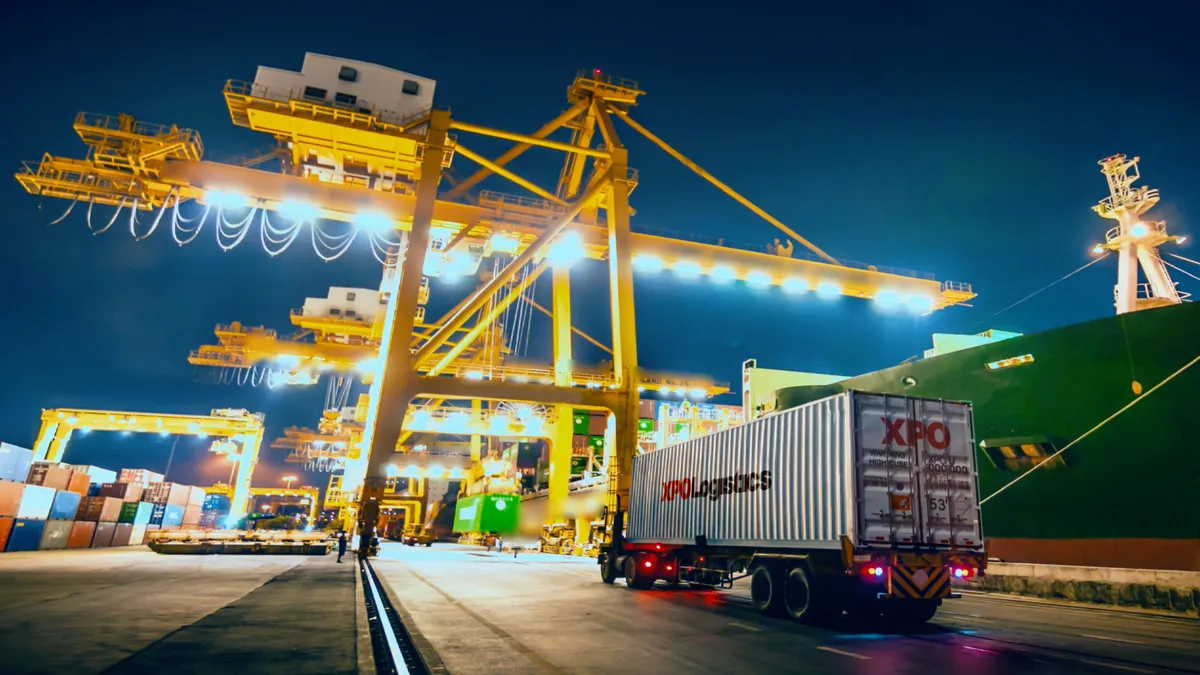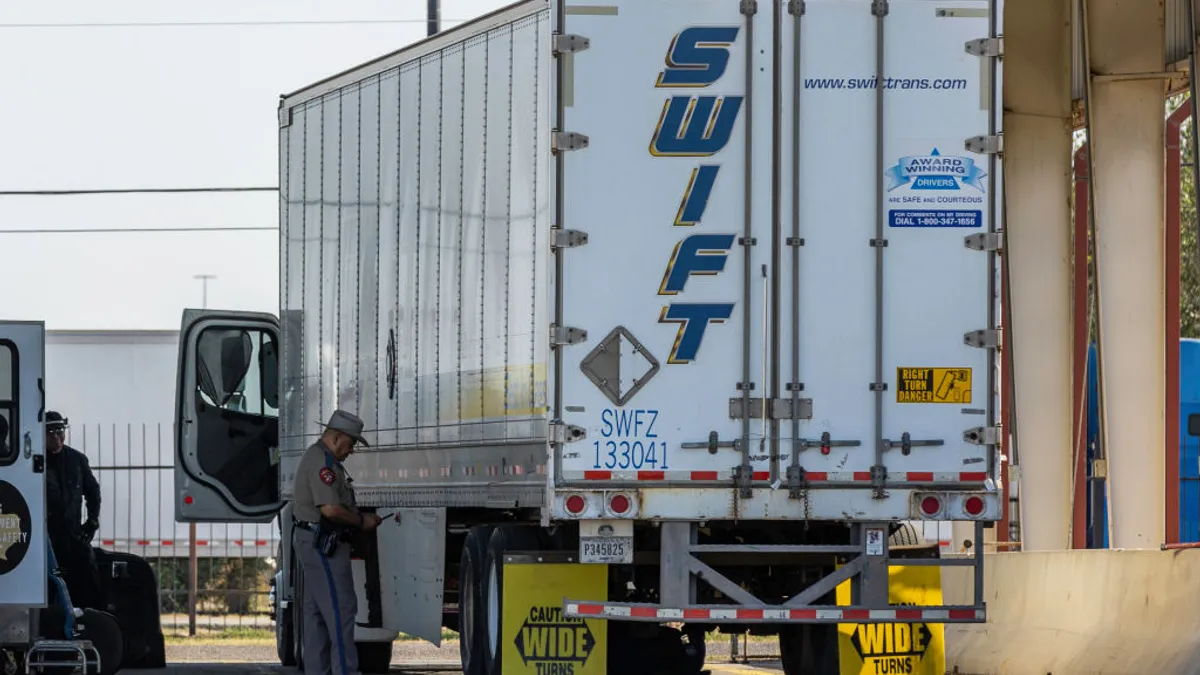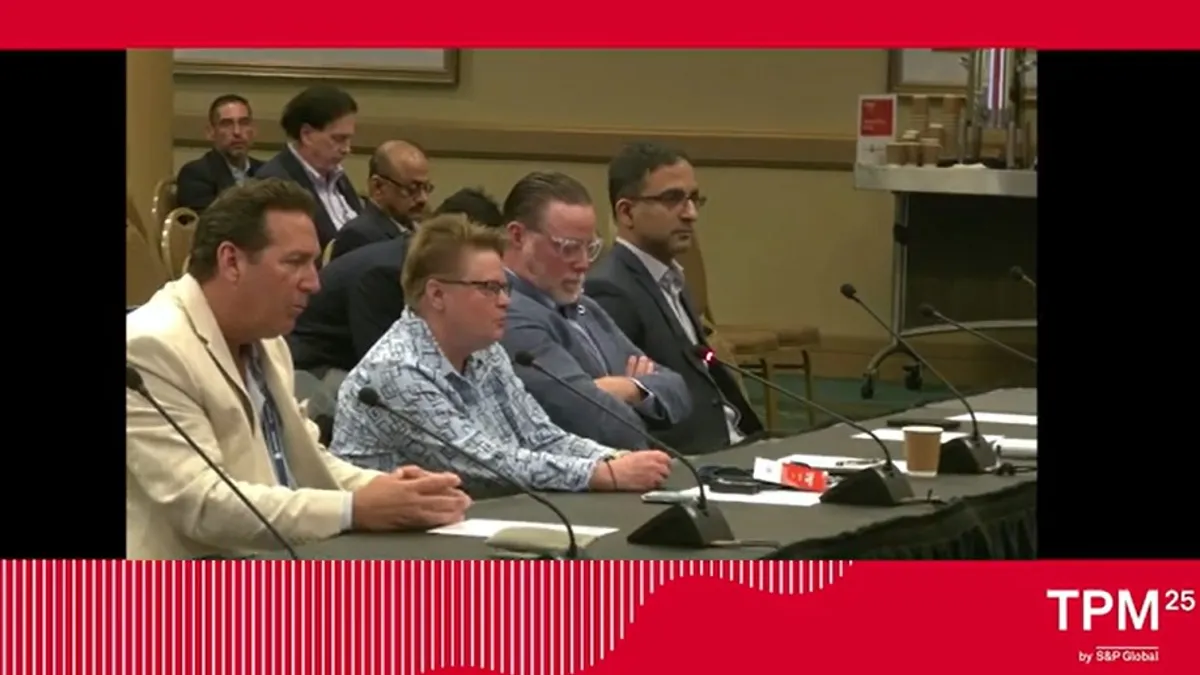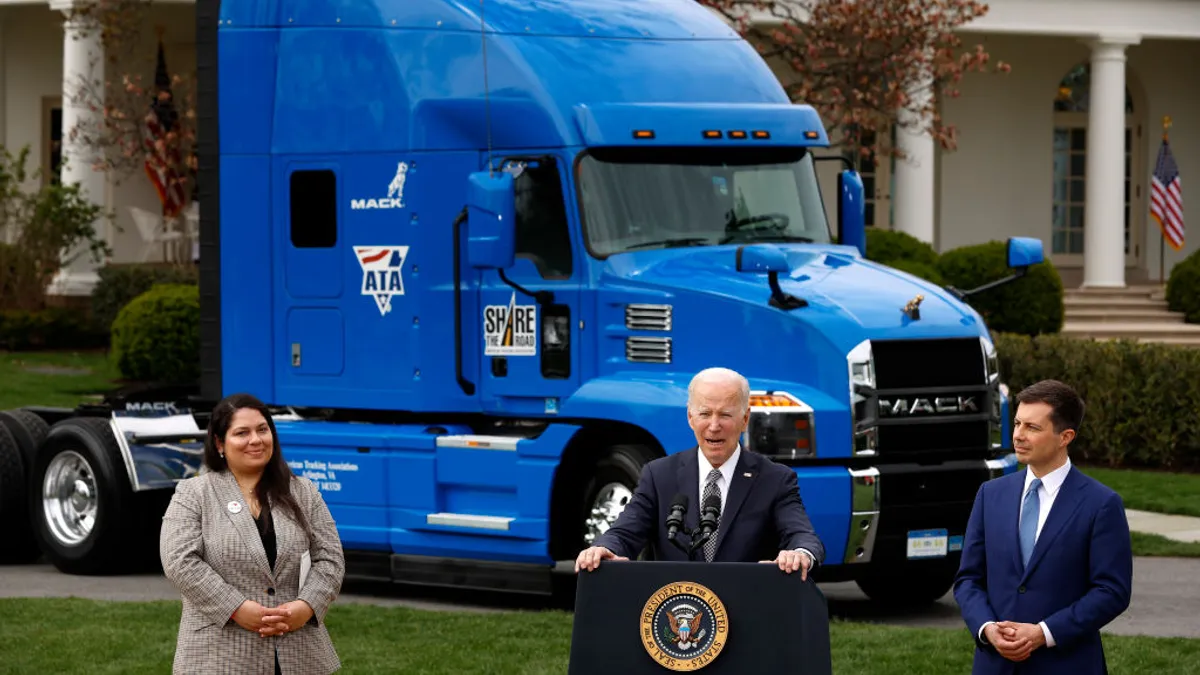This is a contributed op-ed written by Nimesh Modi, CEO of BookYourCargo. Opinions are the author's own.
The severe backlog at shipping ports around the world, including and especially those on the West Coast, has become a pervasive issue that's crimping economic activity globally.
Whether it's rolling COVID-19 lockdowns in port-heavy provinces in China that halt operations, or the sometimes dozens of ships anchored off the California coast awaiting to offload at one of its major maritime hubs, these port jams — and thus drayage trucking operations — have become a so-far inescapable clog in the freight supply chain.
One of the most critical issues for drayage operations, domestically, is the exodus of drivers and the lack of any real pipeline to recruit and retain new ones.
Though "driver shortage" tends to be a concept thought of mostly in terms of trucking's long-haul segment, the driver shortage has become dire at the ports, where drivers have been fleeing drayage work in droves.
It's time to figure out solutions that make drayage workable in the modern world, so that drayage carriers can attract and retain a vital driver workforce.
Short hauls; long work
Drayage operations consist inherently of short hauls, but that doesn't mean they aren't complex — and it assuredly does not mean it's easy work.
Drayage life can be grueling for those on the ground. Port truckers, day in and day out, get out of bed at 3 a.m. so they can get in a miles-long line of trucks awaiting their turn to load and unload.
Then, they must wait in another long line to leave the port, venture into regular congestion in cities like Los Angeles, before ultimately making their deliveries at a warehouse or distribution center.
And then they either return to the port to do it again, if they have time left in their shift, or return to terminal or home to do it all again the next day.
It's a cascading effect that's creating a vicious cycle for motor carriers trying to recruit and retain drivers at the ports.

Drayage truckers, and, obviously, the longshoremen at the ports, tend to be more heavily unionized than other segments of the industry. So, they often will strike over various issues, further clogging dray operations and headaches for port truck drivers and carriers.
Likewise, the drayage segment over the past decade has tended to be a hotbed for disputes around driver misclassification.
As opportunities arise in other industries, such as the surge in delivery driver jobs due to e-commerce demand, former drayage drivers opted for those jobs over their port work.
And it's not just a shortage of drivers plaguing drayage carriers. Lately, they've been hampered by a shortage of tires, containers and parts — which only creates further delays and headaches for drivers and exacerbates the turnover issues.
It's a cascading effect that's creating a vicious cycle for motor carriers trying to recruit and retain drivers at the ports.
Facing the tall task together
The COVID-19 pandemic prompted an examination of many aspects of our society and our economy over the past 18 months. With these mounting shortages at the ports, it's become clear we need to cast critical eyes on operations at the ports, particularly the experiences of one of its most vital pieces — the drivers working the 12-hour shifts to move freight from ships to local distribution centers.
We simply can't sit around and wait for these problems to solve themselves. Drayage operators must be able to better manage their operations and ensure they're profitable, so the economy can continue to operate without this kink in the hose.
That's a tall task. How do we address rolling shortages like tires, containers, chassis and trucks? I'm afraid those will only be worked out over time as the supply chain can catch its breath and recalibrate.
However, it will take a collaborative effort by all parties — shippers, motor carriers, maritime carriers, the ports — to address the issues that push port drivers away from their work and make the job prone to so many headaches.
First and foremost, we must listen to dray drivers, hear their concerns, and take these concerns seriously.

For example, a shipper calling a drayage driver 50 times a day to find where their shipment is simply feeds into the cycle of turnover and detracts from the driver's actual task of moving freight between the ports and warehouses.
Like the broader driver shortage plaguing other segments of trucking, it will take a multi-pronged approach. But first and foremost, we must listen to dray drivers, hear their concerns, and take these concerns seriously.
They play a vital role in our society, and we can't expect their work to continue in the way it has. The right approach removes the friction between drayage operators and other stakeholders, and streamlines this vital intersection, the ports, of global freight transportation
To submit an opinion piece for publication on the Transport Dive website, please visit https://www.transportdive.com/opinion/submit-opinion/ and view our guidelines and submission form.




















